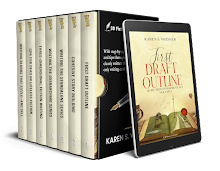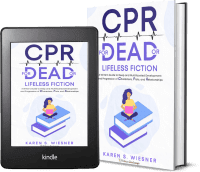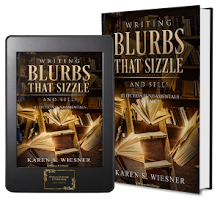https://aliendjinnromances.blogspot.com/2019/04/theme-story-integration-part-1-villain.html
We are discussing the integration of techniques of story-telling, where "story" means what is going on inside the point of view Character, the Main Character.
It isn't a story if something doesn't change.
So how and why a Character changes is called Character Arc -- because humans change in a complex series of incremental course corrections throughout life.
If you open your novel with the main Characters already perfect, readers will fall asleep before the end of Chapter One -- because "nothing is happening."
The plot may be roaring, threats and dangers attacking from all sides, predicaments tightening, horrors looming, but nothing is happening in the STORY.
Romance readers (in fact most readers) are looking for novels about how other people solve problems other than the ones the reader has. Most writing teachers term that thirst for "other" a taste for "escapism."
The most virulent pejorative ascribed to science fiction is "escapist literature." Somehow, it is only lesser mortals who want to "escape." So it is wrong to read "fluff."
The truth is that science fiction is not escapist -- and in fact most Literature is not escapist. Readers read to understand reality -- their own, and that of others.
To understand that the Earth is sort of roundish, we had to put a ship into orbit and take pictures. Before that, it was only math. Now we really know at a level where understanding can happen.
Likewise, in marriage, in searching for a Soul Mate, in imagining what you can become, you may "know" the math, know the odds against you, know the adages your parents taught you, but still not understand what Love and Marriage is.
To gain the understanding that comes from blending all that knowledge, you need perspective. You need to go far away, and look back from another angle.
That is why we read Romance -- and Science Fiction, and Mystery, and Westerns.
It is also why Gene Roddenberry insisted so hard that the Character of Spock had to be in the Bridge Crew. To make his Western-In-Space into Science Fiction, Roddenberry needed an Alien.
He had to give the audience the perspective on humanity from far-far-away. The mundane TV audience of the 1960's had no experience with that kind of fiction. Science Fiction had much too small a readership -- and was considered kid-lit. (which it was, because that was the only market for real science based stories.)
Since most of your readership for science fiction, fantasy or Paranormal Romance consider themselves Good Hearted, the most alien Character you can lure them into is the Black Hearted Villain.
As noted in Part 1, the Villain is the Hero of his own Story.
No one sets out in life to be "bad," even if the target of their purposive actions of destruction are "good." Whatever needs to be destroyed is defined as "bad."
So whichever side you are on is the "good" side because you are on it.
And yet, we identify types of people by their actions, or at least our perception of their actions. The good are kind, generous, considerate, happily serving, helping, saving others, with a serene demeanor. The good enjoy causing joy.
The bad are easily angered, flashing irrational rage and destruction at mere annoyances, mean, bullying, and always outraged, often drunk, careless of others' feelings, or using a person's personal emotions against them in a kind of emotional judo. The bad enjoy causing pain.
Which one is the Villain?
To the good, the wild-raging destroyer is the Villain.
To the bad, the Character who can't be needled into violence or blackmailed into betraying their ethics is the Villain.
Good people can't be controlled. It drives the bad insane.
Since we all see and recognize this dichotomy in everyday life, and since we are all composed of emotional triggers, psychological buttons, and neurotic tendencies in some things, even while being serene, rational and joy-spreading in other areas, we all know there is no such thing as a "Good Guy" or a "Bad Guy."
We, as humans, are mixed bags.
Fictional Characters have to be purified, then remixed in simpler ways to depict real people while being only a selective recreation of reality.
That is the art of Story -- selecting ingredients and cooking them up into Characters.
Humans can't quite understand themselves, never mind really understand people around them.
But readers search for an understanding of Characters that is firm, reliable, making the Characters (somewhat, not totally) predictable.
Thus we have the expression "out of character."
If a writer makes a Character do something "out of Character" the readers generally toss the book aside. It's contrived, and not entertaining.
In real life, people are always doing things "out of character" -- even though they may average a reliable and predictive behavior. Once in a lifetime, a good guy may drive drunk and run someone over. Others drive drunk habitually, and very often get caught, and have issues keeping a driving license.
We read read novels to experience Characters who stay in character -- with surprises that are predictable only in retrospect. "Oh, I KNEW IT!!"
For example, push comes to shove at the end of the novel, and the Bad Guy reaches out a helping hand to the Good Guy whose life has been pulverized.
Readers take that final act of the bad guy as evidence he has changed.
The Villain has become Hero Material (therefore worthy of love.)
But if it just happens, in one fell swoop, it isn't plausible. The Characters are labeled thin, cardboard, and the plot contrived.
That's why it is called a Character Arc -- the reader/viewer can't see much fundamental change in the Character from scene to scene, action to reaction, because the changes are TINY. But the Character is making a 180 in life.
The Villain may be doing a "Bootlegger's Turn" or merely entering a new freeway via a cloverleaf highway interchange. But you can Arc your Villain into a Hero.
 |
| https://amazon.com/Anita-Blake-Vampire-Hunter-Collection-ebook/dp/B00AFX2A0A/ |
If you Arc a Hero into a Villain, incrementally forcing a good person to do bad things, then accept the bad as normal and eventually as good, the novel will be called "Dark."
A good example of leading a Hero into Darkness, and a really grand good read, is the Anita Blake series by Laurel K. Hamilton, which we've discussed under the broad topic CHARACTER ARC.
https://aliendjinnromances.blogspot.com/2017/05/trends-and-counter-trends-part-1.html
And under Theme-Character Integration:
https://aliendjinnromances.blogspot.com/2013/06/theme-character-integration-part-1-what.html
Since editors discovered a market for novels turning the Hero into a Villain, popularized by the Vampire novels where the good guy becomes a Killer, we have an explosion of novels that vie with each other for the Dark label.
The next swing of the publishing pendulum will very likely be turning the darkest Darth Vader Villain into a Good Guy.
We all know that in Star Wars, Darth Vader's behavior is later explained in more human terms, and his final moments revealed a not-so-black-bad-guy.
But he dies. He doesn't get to become a good guy, and reverse some of the damage he's done.
This is viewed as plausible by most of the audience. We don't usually get second chances in real life.
But what if you do?
How could you convince the Star Wars audience that Darth Vader survived in another universe to gradually become a good guy?
What makes bad guys (or gals) bad?
What makes good gals (or guys) good?
What is the difference?
Is it temperament? Is it innate? Is it acquired? Is it only parenting? Or just environment?
Your answer to each of these questions individually is a theme. And in fact you might have several answers to each of these questions thus generating a raft of themes.
Pick an answer that rarely if ever manifests in our real world, and you can craft a science fiction romance out of that theme.
But, to tell the story, you need a Character, and to get a Character you need to build a World where such a Character might arise.
To build that world, you need the theme. To build that Character, you need the theme. To build your theme (not mine; yours) you need a theory of the truth behind reality, a statement about the human condition.
For Romance genre, the master theme is LOVE CONQUERS ALL. But to have "love" you need two people (though they don't both have to be human.)
In fact, love between two Aliens is also interesting, but in today's market, you need a human Character who "arcs" during the Alien Love Story.
So you need a theory about what a human being really is, and how humans resemble your Aliens (similarity vs differences.)
Gene Roddenberry simply described Spock as "logical" - and logic driven, not emotional. Not as "emotionless" but as logical. (as if emotion is not logical)
So to concoct an Alien Romance you need an Alien who differs from your Human lead Character in some specific and easily conveyed way. Over the course of a long series of novels, you can reveal depths and nuances, plus complexities and changes, but for the opening point you need a clean, clear statement of how the Alien differs from the Human.
To find that clean, clear difference, you need a model of humanity -- a representation of what makes a human, human. You need a theory of human nature.
Many Romances use the Soul Mate theory to explain irresistible attractions. To postulate Soul Mates, you have to postulate souls -- and know something of their structure, origin and function.
How can a woman's love turn a Villain into a Hero?
What about our current real world prevents this transition from bad to good from being common, frequent, plausible?
What about our world would you have to change when you build the world for your Story?
To make it plausible for a Villain to turn Hero, you have to explain that difference in your World the way Roddenberry explained Spock as purely logical.
You have to chronicle the journey of the Villain incrementally, novel by novel, in a long series, as you explain how his world differs from the reader's world -- and how it is the same.
Only in children's stories or "comics" (not graphic novels) do people just suddenly, and without explanation or motivation, change into the opposite of what they've been seen to be in a plot-sequence.
So, bit by slow, detailed, bit at a time, you reveal the inner structure of your world that you built -- and make it clear how your world differs from everyday reality such that this "impossible" thing is possible.
In our Reality - "As the twig is bent; so grows the tree," is a true statement about human nature. Also the apple doesn't fall far from the tree is true of humans.
What is different about your World that makes those two statements about Human Nature false?
Jacqueline Lichtenberg
http://jacquelinelichtenberg.com




































